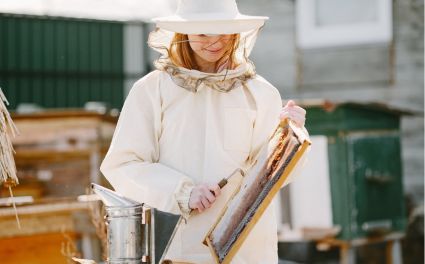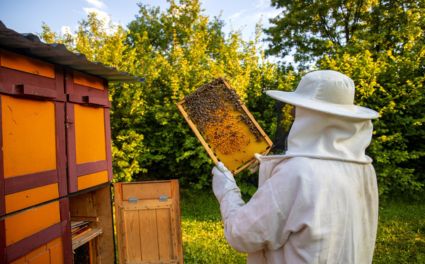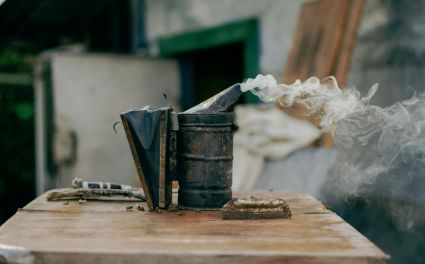Welcome to a comprehensive guide on washing a bee suit! As a beekeeper, you know the importance of keeping protective gear clean and in top-notch condition. A clean and well-maintained bee suit not only ensures safety but also helps maintain the hygiene of the hive.
Whether you’re a seasoned apiarist or just starting, this blog post gives you everything you need to know about washing your valuable beekeeping attire. Let’s dive right in and learn how to keep that buzz-worthy gear looking fresh as honey!
Pre-Washing Preparation
Before diving into the washing process, it’s important to take a few steps to prepare your bee suit (or protective outfit). Begin by checking for any loose threads, small holes, or fraying seams that may need mending. Repairing small damage beforehand ensures it doesn't worsen during washing.
Next, remove excess propolis, beeswax, or pollen stuck to the fabric using a soft brush or cloth. This step helps prevent your washing machine from clogging and ensures a more effective, deeper clean.
Once the surface has been cleaned, gather all necessary materials: a mild detergent suited for delicate fabrics (like poly-cotton or polyester blends), soft brushes for gentle scrubbing, and a mesh laundry bag if you plan to machine-wash. Avoid harsh chemicals or bleach, which can damage fabric strength and compromise protective qualities.
Then, focus on closures: ensure zippers are zipped, Velcro flaps are fastened, and buttons or snaps are secured. This reduces the risk of snagging or tearing during the wash.
Always check the manufacturer’s instructions before washing. This includes reviewing any tags or user manuals for recommended water temperature, wash cycle type, or whether hand- or machine-washing is preferred. Taking these precautions extends the life of your protective clothing.
Washing Methods
Beekeepers have several options when cleaning suits. The best method depends on how dirty the suit is, how often it's used, and how gentle you want to be.
Hand Washing
Hand washing gives you maximum control:
-
Fill a tub or basin with lukewarm water and add a gentle detergent.
-
Submerge the suit and gently agitate — especially in areas with stains or heavy soiling (e.g. around the knees, underarms, or collar).
-
Use a soft brush for lightly scrubbing tough spots — be careful not to damage seams or thin material.
-
Rinse thoroughly until all soap residue is gone.
-
This method is gentle on fabrics and ideal for smaller suits or delicate gear like beekeeping kids suits that must maintain fit and structure.
Machine Washing
Machine washing can be used with care:
-
Confirm first whether your suit is machine-washable (check tags or manufacturer guidance).
-
Remove detachable accessories (hoods, veils, etc.) before washing to protect them and avoid tangling.
-
Place the suit in a mesh laundry bag to reduce snags.
-
Select a gentle or delicate cycle with cold to lukewarm water (avoid hot water to prevent shrinkage or fabric damage).
-
Use mild, pH-neutral detergent. Never use bleach or strong chemical cleaners.
-
Wash the suit separately from other laundry to avoid cross-contamination (e.g. pollen, propolis, wax).
-
Opt for a gentle spin cycle if available to reduce wear and stress on the fabric.
Stain Removal & Odor Control
Stains and residual odours are common given bee work — honey, wax, pollen, propolis, and sweat all leave marks. Keeping your gear fresh improves both hygiene and wearer comfort.
Pre-treating Stains
-
Apply a small amount of mild detergent directly to stained areas.
-
Let it rest for a few minutes to loosen the residue.
-
Gently scrub with a soft-bristle brush or toothbrush in circular motions.
-
Be careful not to over-scrub, which may degrade fabric in high-stress areas.
Eliminating Odours
-
During the rinse cycle, adding white vinegar (a small cup, diluted well) can help neutralize odours and soften fabric without strong perfume scents.
-
Alternatively, baking soda added before washing (or after a cycle) helps absorb odour naturally with minimal fragrance.
-
Ensure full rinsing so no vinegar or baking soda residue remains.

Machine-Washing Technique: Step-by-Step
-
Remove gloves, veils, jackets, or other accessories before washing the main suit.
-
Use a gentle/delicate cycle, cold or cool water.
-
Add mild detergent, no bleach or harsh chemicals.
-
Zip up and fasten all closures to prevent snag damage.
-
Wash items separately to avoid residue transfer.
-
Use low-speed spin if possible; avoid aggressive spins.
-
After washing, air dry the suit rather than machine dry to avoid heat damage.
Drying & Storage
Proper drying and storage are vital for preserving the integrity of your protection.
-
Once washed, gently shake off excess water.
-
Hang the suit on a sturdy hanger in a well-ventilated area, away from direct sunlight or heat sources that could fade or damage the fabric.
-
If weather allows, hang outdoors; sunlight helps kill bacteria.
-
Avoid using high-heat dryers, which may shrink the material or warp fabric.
-
When completely dry, store the suit in a clean, dry place. Use a garment bag or sealed bin to keep out dust, pests, and moisture.
-
Store away from strong odors like mothballs or chemicals, which might cling to the fabric and cause interference when bees detect scent.
Routine Maintenance & Inspection
Regular care keeps a bee suit effective and safe over time:
-
After each use, inspect your suit for damage — holes, loose threads, worn seams, or weakened zippers.
-
Repair small issues early to prevent expansion of damage. Use suitable thread or patch kits as needed.
-
Check closures: cuffs, ankles, Velcro, and hoods often show wear sooner than other parts.
-
Avoid harsh chemicals to preserve fabric integrity.
-
If certain parts (e.g., elastic, Velcro, zippers) weaken, replace them — many suits allow modular maintenance.
-
Periodically check compatibility with other gear like beekeeping jackets, gloves, veils, trousers, ankle protection to ensure overall completeness and safety.
Best Quality Beekeeping Suits & Protective Gear
High-quality gear improves comfort, safety, and longevity. A reliable supplier offers options tailored to different needs (ventilation, budget, climate, workload).
Look for features like multi-layer design, breathable mesh, durable fabric, and reinforced seams. Accessories like zipped hoods or veils, comfortable gloves, and well-fitting trousers or ankle guards enhance utility.
Brands such as OZ Armour are known in the beekeeping community for crafting gear with attention to real-world use. Focusing on comfort, protection, and durability, these providers make suits, jackets, gloves, veils, trousers, kids suits, and ankle protection available to both hobby and professional apiarists.
Related Gear & Resources
-
If you want more freedom or modular setup, consider pairing beekeeping jackets with beekeeping trousers and beekeeping ankle protection for full-body coverage.
-
For hand protection, high-quality beekeeping gloves are indispensable.
-
The face and head area are critical; always use safe and breathable beekeeping veils.
-
Young beekeepers can stay protected in purpose-designed beekeeping kids suits.
-
For further guidance on best practices, gear comparisons, and maintenance tips, beekeepers should read more blogs about beekeeping.

Final Thoughts
Proper washing, maintenance, and care of your bee suit are essential. A clean, well-kept suit protects against stings, improves comfort, and lasts longer. The investment in time and effort pays off in safety and performance.
With careful preparation, gentle cleaning, correct drying, and regular inspection, beekeepers can rely on their protective gear for many seasons. Whether you choose full suits or a modular gear approach, including jackets, gloves, veils, trousers, ankle protection, or kids suits, your mindset should be: maintenance is part of the job.
Quality matters — comfort, safety, and durability should always be priorities. Suppliers like OZ Armour understand this, designing gear built for real apiary conditions. Choose wisely, wash properly, and enjoy safer, more confident beekeeping.




